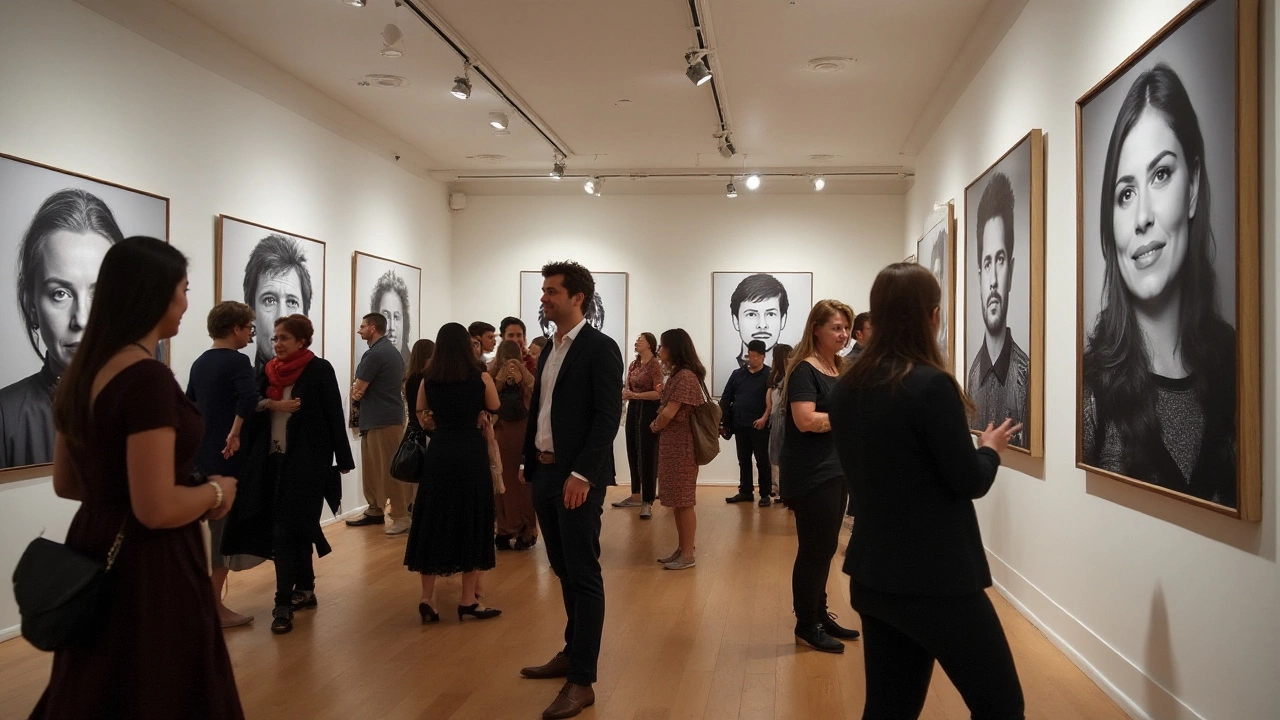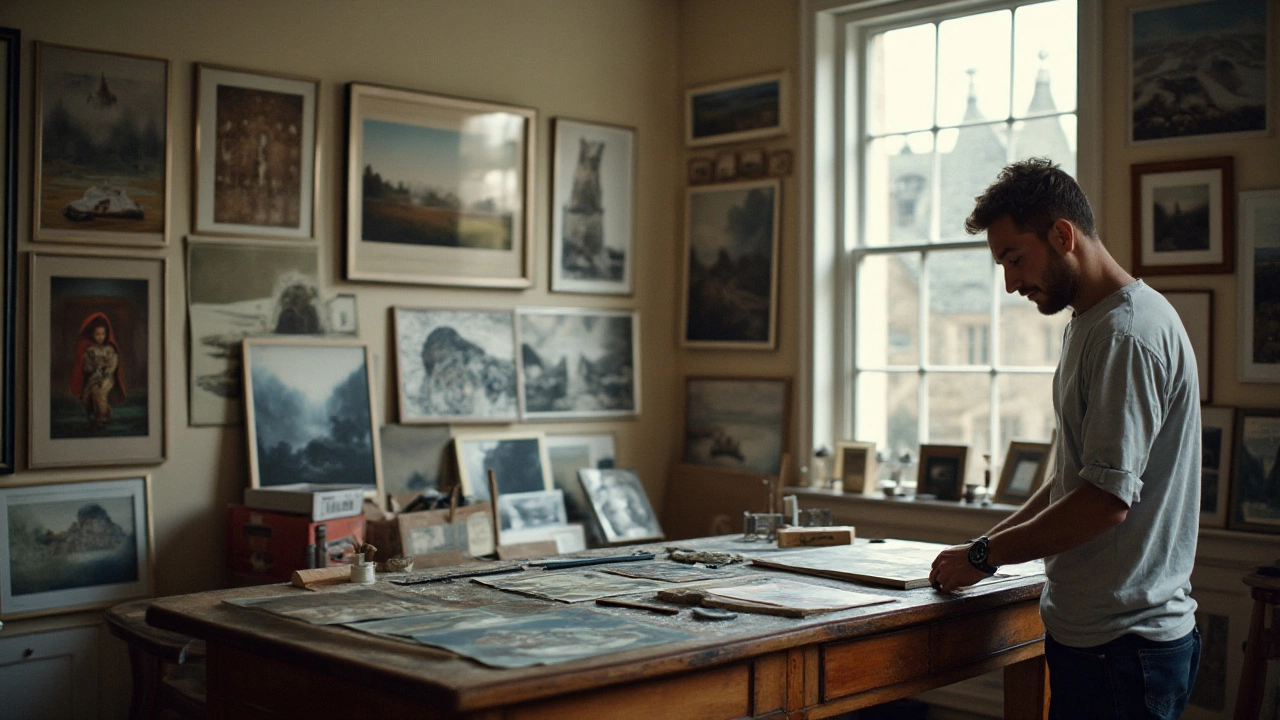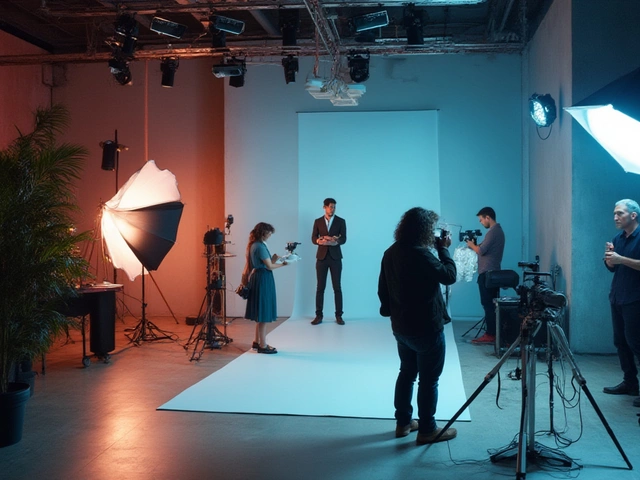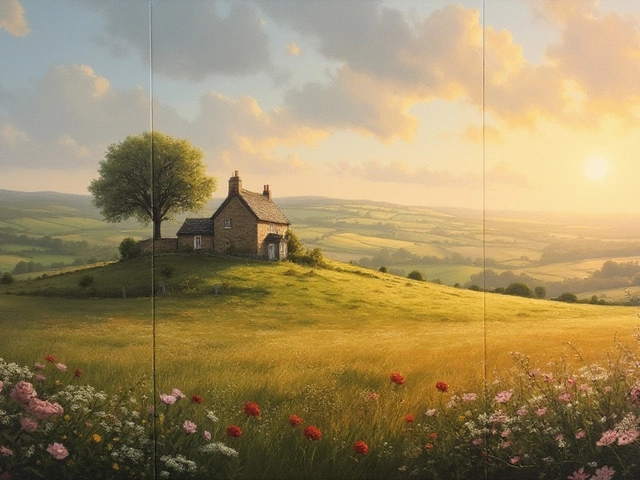In the bustling world of creative pursuits, fine art photography stands as an exciting career path. More than just capturing images, it is about presenting a narrative, conveying emotions, and creating a lasting impact on the viewer. But can this artistic form translate into a sustainable livelihood?
This article delves deep into the intricacies of establishing oneself as a fine art photographer. From honing your craft and building a compelling portfolio to understanding the market dynamics and finding the right platforms to showcase your work, each step plays a crucial role in determining your success. With passion, perseverance, and a strategic approach, you can indeed transform your love for photography into a rewarding career. Let's explore how.
- Understanding Fine Art Photography
- Building Your Portfolio
- Market and Selling Strategies
- Challenges and Future Prospects
Understanding Fine Art Photography
Fine art photography is much more than a regular click of the shutter; it is a profound exploration of aesthetics, ideas, and emotions. It involves capturing an image with an artistic vision, intending for it to be unique, meaningful, and evocative. Unlike commercial photography, which often focuses on satisfying client requirements or advertising products, fine art photography centers on the photographer's individual expression and interpretation. The photographer is both an artist and a storyteller, weaving narratives through imagery that can provoke thought, stir emotions, and ignite imagination in the audience. This domain insists upon a creative eye, a deep understanding of composition, and the ability to see beyond what meets the eye. It's an artistic pursuit that allows photographers to delve into abstract concepts, explore the human condition, or capture the ephemeral beauty of a moment in nature.
A key aspect of fine art photography is intent. Every photograph is crafted with a specific purpose, reflecting the personal philosophy or vision of the photographer. This intention sets fine art photography apart from casual snapshots or documentary photography. Often, it involves a deep connection between the photographer and the subject, leading to extensive planning in terms of location, lighting, and even post-processing techniques that align with the envisioned mood or message. Noteworthy fine art photographers like Cindy Sherman or Ansel Adams have shown how photography can be an expressive medium analogous to painting or sculpture. Their works are imbued with personality and often challenge traditional boundaries, encouraging viewers to engage in dialogue with the artwork.
The renowned photographer Ansel Adams once said, "You don't take a photograph, you make it." This quote underscores the idea that fine art photography is a deliberate and considered process, demanding the artist’s full engagement and insight. The result is a body of work that resonates on an emotional level and invites interpretation.
Besides creativity and technical prowess, understanding the current trends and historical context of fine art photography is crucial. This includes studying the works of masters and contemporary artists alike, gaining insight into diverse styles and approaches. From monochrome matrices to vibrant splashes of color, from sweeping landscapes to intimate portraits, the possibilities are virtually limitless. As digital technology evolves, new genres and techniques emerge, offering fresh avenues for artistic exploration.
For those aspiring to make a livelihood in fine art photography, building a recognizable style or aesthetic is essential. It's about developing a signature that sets one's work apart in a crowded marketplace. Many artists find success by focusing on particular themes—be it surreal dreamscapes, raw urban environments, or emotion-driven portraits—that make their work instantly recognizable and deeply personal. Exhibit these works through galleries, either physical or online, to reach audiences who appreciate the intricate beauty and complexity of such art. When navigating this field, it becomes clear that it's not just about the photographs themselves, but the connection they forge with viewers, their ability to elicit emotion, and the stories they tell.

Building Your Portfolio
Creating a portfolio as a fine art photographer is not just about assembling a collection of your best images; it's about telling a cohesive story through your work. A well-curated portfolio is crucial for establishing your identity in the art world and attracting potential buyers, galleries, and art houses. It acts as a visual resume that speaks volumes about your style, technique, and vision. Selecting pieces that complement each other and flow together will show you have a consistent voice and artistic perspective, essential qualities for any budding artist.
One of the first steps in building your portfolio is identifying your unique style or genre within photography. Are you drawn to landscapes, portraits, or abstract forms? Do you have a penchant for black and white, or is color your forte? While experimentation is vital for artistic growth, maintaining a recognizable style is crucial for brand identity. This style will be your signature as you become known in the industry. A study by the British Journal of Photography in 2022 found that portfolios with a clear, consistent style were 70% more likely to be favorably reviewed by art galleries.
It's also important to present your work in different settings, both online and offline. Online platforms like Instagram and personal websites offer global reach and exposure. Engaging with your audience through these platforms can sometimes result in valuable feedback and opportunities. Offline, participating in local exhibits or hosting a small solo gallery show allows collectors and enthusiasts to see the physical prints, which often have a different impact than digital formats. Having tangible copies of your work can enhance their perceived value.
A quote from renowned photographer Ansel Adams puts the importance of print into perspective:
"The negative is comparable to the composer’s score and the print to its performance. Each performance differs in subtle ways."This emphasizes how a physical representation of your photos can convey nuances that a digital screen might not. When preparing prints for your portfolio, consider the choice of paper and printing techniques, as they can significantly impact the final result.
Additionally, portfolio reviews can be invaluable. Seek feedback from peers, mentors, or seasoned photographers who can offer a fresh perspective on your work. Constructive criticism can help identify areas of improvement while also highlighting your strengths. Incorporate only the most polished shots that best exemplify your abilities to maintain a high standard throughout. Maintaining this selectiveness demonstrates professionalism and an eye for detail, qualities that buyers respect and seek in fine art photographers.

Market and Selling Strategies
Diving into the world of fine art photography with an aim to make a living requires a keen understanding of both art and business. It’s not just about capturing beautiful images; it's about finding the right channels to reach your audience and convert admiration into a sale. A pivotal step in this journey is identifying your target market. Who are the people most likely to appreciate and invest in your work? You need to design your portfolio with these buyers in mind, aiming to create a resonance between your artistic vision and their tastes. There's a multitude of platforms where art enthusiasts congregate, both online and in-person, and each has its unique dynamics that can affect your sales potential.
The digital age has given rise to numerous online platforms that serve as virtual galleries. Websites like Etsy, Society6, and Saatchi Art allow artists to connect with a global audience, providing tools to showcase their work effectively. When choosing a platform, consider factors such as the audience demographics, support for print sales, and the commission structure. Building a personal website can also offer a more personalized touch, giving you control over branding and presentation. However, it's crucial to ensure your site is optimized for search engines so potential collectors can easily find your art. Investing in marketing campaigns via social media platforms and search ads is another strategy to boost online visibility.
Don’t overlook traditional venues either. Art fairs, galleries, and exhibitions can significantly boost your reputation and sales. These settings offer you the chance to interact directly with potential buyers, art curators, and critics. Establishing connections with galleries might initially require resilience and networking, but they often act as intermediaries, offering your work a stamp of approval. While online engagement is essential, meeting your audience face-to-face can create lasting relationships. Balancing both online and offline strategies ensures broad exposure, tapping into different segments of art buyers who prefer varying purchasing methods.
Providing limited edition prints can increase the allure of your work, adding a sense of exclusivity and urgency. This strategy is common among many established fine art photographers. Each print is usually signed and numbered, ensuring collectors understand the unique value. It's also beneficial to include a certificate of authenticity, which guarantees the print's legitimacy. Pricing these prints requires careful consideration; they should reflect their market value while remaining competitive. Offering a tiered pricing strategy based on size or edition number can also attract different types of buyers, allowing for flexibility in purchasing decisions. Remember, the ultimate goal is to create a perceived value that aligns with the buyer’s expectations.
Integrating your photography business with social networks is not just about visibility but also about engagement. Creating compelling content, telling the story behind each photograph, and using platforms like Instagram and Pinterest can foster a community around your work. Here, followers can become buyers, attracted by the narrative you craft around your images. Regularly interacting with followers, responding to comments, and showcasing behind-the-scenes processes can make prospective buyers feel more connected to the art. In the words of Chase Jarvis, “Engage, get social media savvy, connect authentically, and build relationships. That’s where genuine fans come from.”
Consider leveraging data to drive your strategies as well. Analyzing sales metrics, website traffic, and social media engagement can offer insights into what resonates with your audience. Tools like Google Analytics or built-in social media analytics can pinpoint trends and patterns, helping you tailor your approach. Understanding where your traffic is coming from, which images attract the most engagement, and what times your audience is most active can all contribute to more targeted and effective marketing efforts. With these insights, adapt and iterate on your strategies to continually align with evolving buyer behaviors and preferences.

Challenges and Future Prospects
Venturing into fine art photography can be a roller coaster of ups and downs, filled with unexpected hurdles and paths to discovery. One of the most significant challenges that aspiring photographers face is distinguishing themselves in an already saturated market. With digital technology making photography more accessible than ever, people from various backgrounds are trying their hand at creating art, leading to an unprecedented influx of talented individuals. This abundance of work makes it difficult for any one photographer to stand out. Striving to maintain originality while keeping up with changing trends without losing one's unique voice is a delicate balance.
Another challenge lies in the financial uncertainties of the field. Unlike more commercial endeavors, where regular contracts provide steady income, a fine art photographer often relies on sporadic sales and unpredictable earnings. It requires a business savvy mindset, balancing artistic creation with strategic financial planning. The task of pricing artwork can be particularly daunting. Finding that sweet spot where the price reflects the value without alienating potential buyers is a tightrope walk. Building a reliable clientele often takes years and involves networking, attending art fairs, and continuously promoting your work.
However, these hurdles come with equally compelling prospects. As awareness and appreciation for fine art photography grow, so too do opportunities for artists to exhibit their works in galleries, art shows, and online platforms. The internet, in particular, has opened new doors in the realm of art commerce. Artists can now reach a global audience without necessarily going through traditional gatekeepers like gallery owners or art dealers. Moreover, the rise of social media has quite literally created a feast for the eyes, allowing artists to interact with potential buyers and collectors directly. Online communities can offer valuable support and feedback, too, fostering a cycle of continuous improvement and exposure.
Looking towards the future, fine art photographers might find new and exciting avenues in digital and virtual spaces. Augmented reality (AR) and virtual reality (VR) provide immersive experiences that could redefine how art is consumed. Imagine an exhibition where viewers can interact with photographs in a 3D space, offering a level of depth and engagement unseen in traditional displays. These technologies, although still evolving, present intriguing possibilities for creators willing to experiment. An encouraging quote from the famous art critic John Berger states, "The relation between what we see and what we know is never settled."
"In art, what we may perceive can often illuminate more than reality itself."
Despite the challenges, fine art photography as a discipline presents a unique tapestry of creativity and commerce, offering both struggle and reward. Success requires adaptability and vision, a willingness to learn and explore new mediums while staying grounded in one's artistic foundation. For those devoted hearts willing to navigate its uncertain waters, the journey can be both fulfilling and transforming. Engaging in constant evolution, a fine art photographer's role is dynamic, its future shaped by technology, culture, and personal innovation. It remains a craft where the horizons continually expand, increasingly seen as a legitimate profession with its distinct artful mystique.



